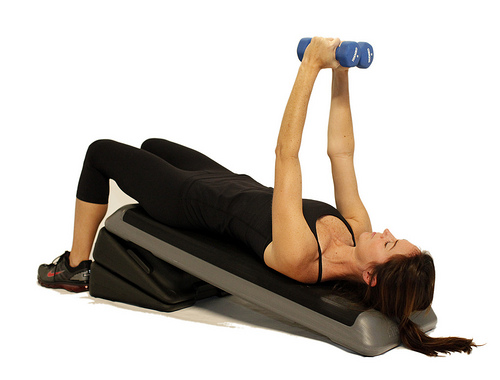Why to Try a New Fitness & How to Do it Safely
- Published: Sunday, March 13th 2011
- in Fitness
 Repetition can sometimes make the once exciting and invigorating into something mundane and blah. Because of this, the idea of exploring and experimenting with new forms of exercise is beneficial for several reasons, says Miraval’s Exercise Physiologist, Andrew Wolf, M.Ed, C.S.C.S.
Repetition can sometimes make the once exciting and invigorating into something mundane and blah. Because of this, the idea of exploring and experimenting with new forms of exercise is beneficial for several reasons, says Miraval’s Exercise Physiologist, Andrew Wolf, M.Ed, C.S.C.S.
“Variety that creates excitement and some mental stimulation can keep you exercising when you may have stopped otherwise,” Wolf tells us.
Not only that, but branching out will force your body to develop a new skill set, making your fitness better rounded.
But, anyone who has tried a new fitness knows – sometimes it’s hard to tell up from down and right from left when you’re teaching your body new tricks. Wolf gave us some tips to keep in mind when exploring a new workout and how to exercise safely, so you’ll be rearing and ready to go for another session.
How to Choose a New Fitness
When you are thinking about trying something new keep in mind that the “magic pill” scenario is just as it seems, too good to be true, Wolf advises. Here are some of his tips on what to keep in mind when choosing a new method of exercise:
- Pick the exercise that you are naturally drawn to not the exercise that is [supposedly] twice as effective at burning calories. Effort equals results and whether you are working hard in the pool or on land in a pilates class, if you enjoy it and can work a little harder, you will get better results.
- Trust your instincts; they may be better than you think they are.
- At the same time, remember to wade into new exercise as opposed to jumping in with both feet. New exercise with its new demands and stimuli can help your fitness along, but too much too soon can be a drawback. If you feel like you probably could have done more during the first few new fitness sessions, then you did the right thing. If you are completely exhausted and feel like you have fallen down a flight of stairs, you might want to stop and meditate on the fact that your body may not be where you thought it was.
How to Exercise Safely
One very common mistake people make when trying something new is to assume what they normally do has been good preparation for what they are going to do, Wolf points out. Here are some things he advises to be aware of to ensure you’re trying out a new fitness safely, and effectively:
- Be conservative the first few times out and listen to your body. If something starts to hurt in a way it did not hurt before the new exercise, your body is telling you that too much too fast is no good.
- Know the difference between breathing hard and being short of breath. As you work harder and harder, more oxygen is needed and more carbon dioxide needs to be removed; this is what causes you to breathe faster and harder, which is natural. Shortness of breath is the inability to take a big enough breath to get enough oxygen. This could be the sign of respiratory or cardiovascular pathology and should not be ignored; you cannot tough this out and under no circumstances should you try. If new activity highlights unexpected symptoms, accept it as nature’s not-so subtle reminder to get a physician involved.
- If you are starting from scratch because you haven’t exercised in a while, do your best to stay as cool as you can. A big part of what makes exercise comfortable or miserable is your core temperature. During exercise up to 80% of your heat loss occurs because sweat evaporates off your skin, so in a hot, humid, stationary environment, (i.e. a gym environment) evaporation is slowed way down and you are going to get HOT. As you become more fit you will actually get better at regulating your temperature but in the initial phases your head may look like a tomato and you may feel horrible. Cold fluids and the right clothes can make the difference.


